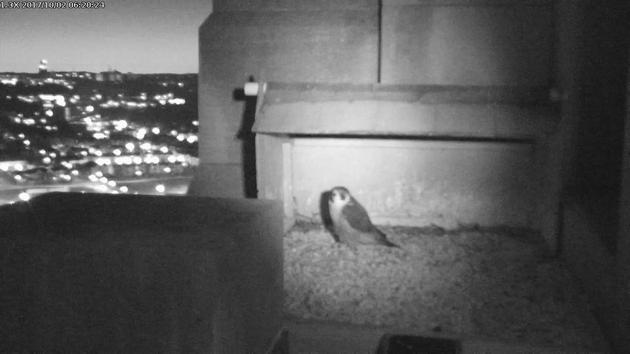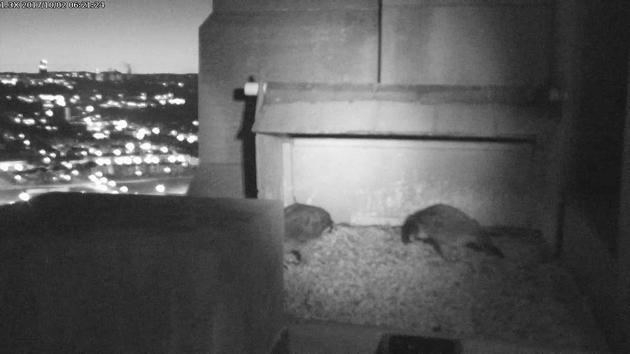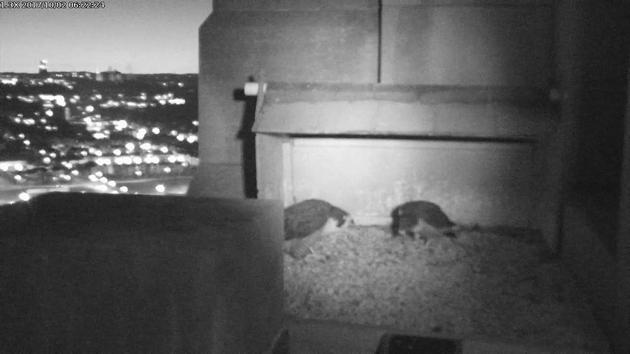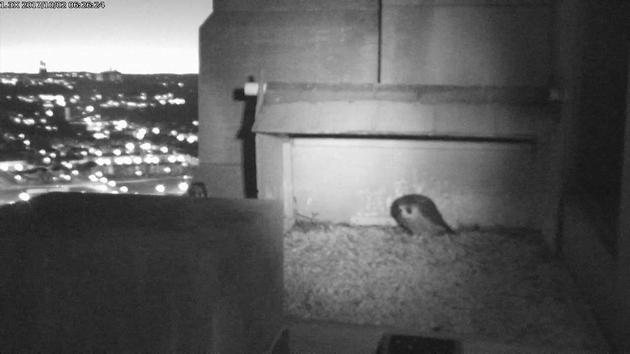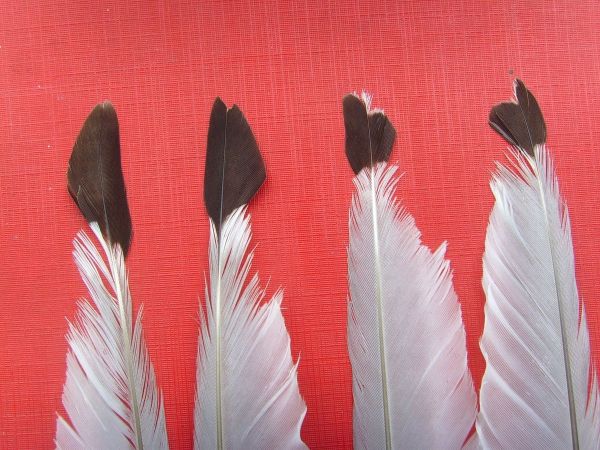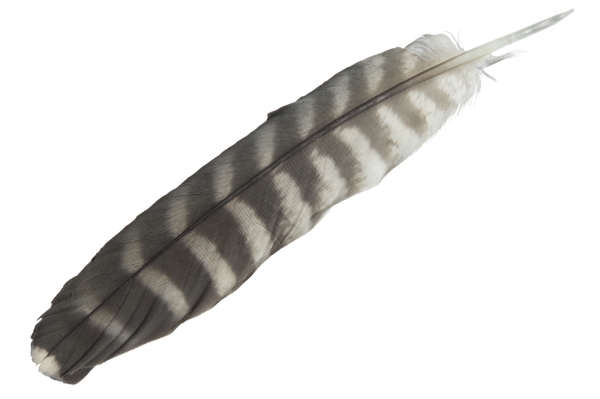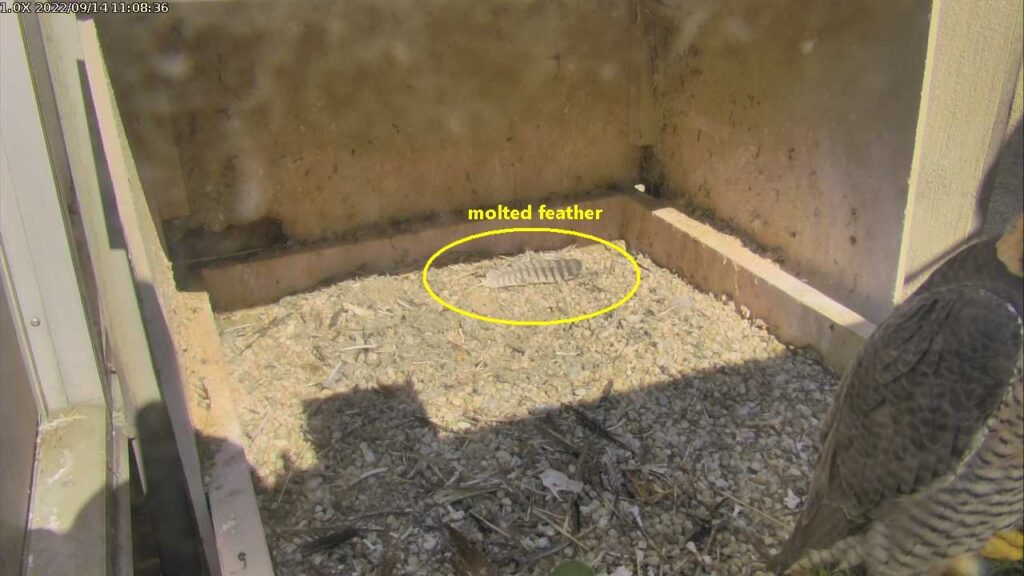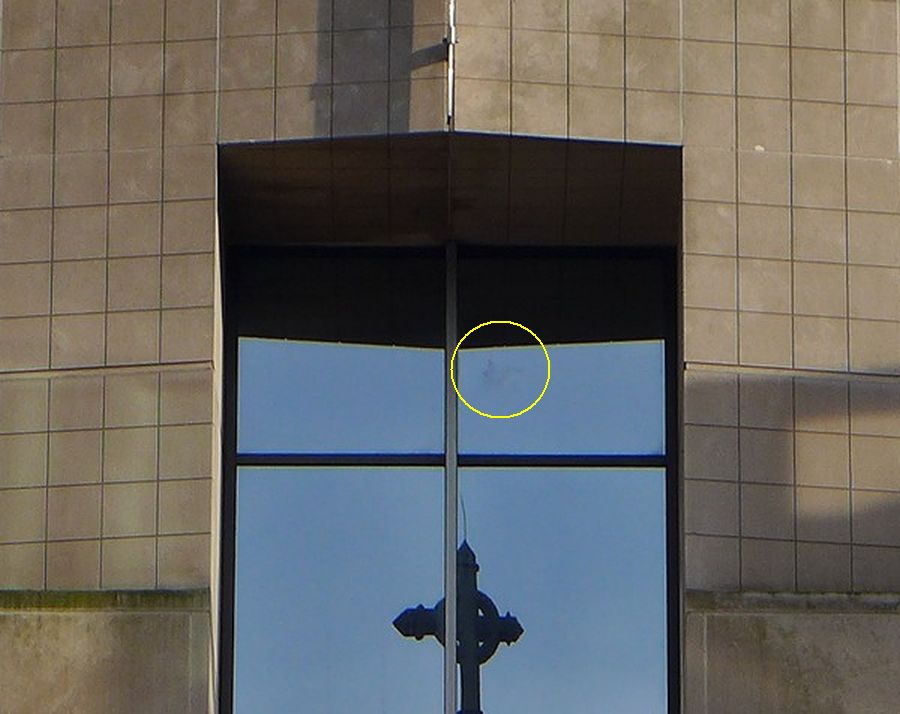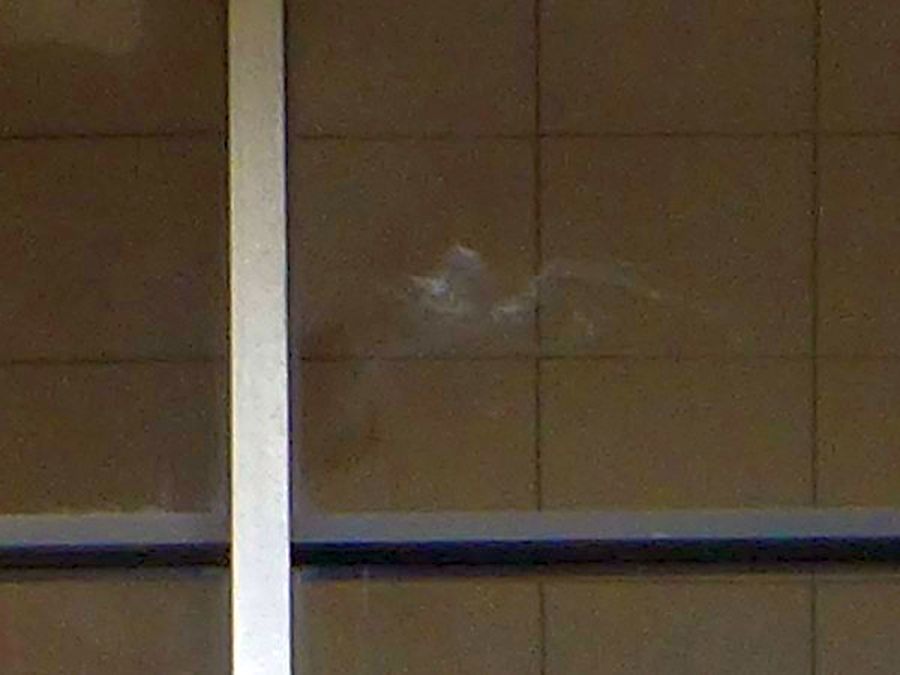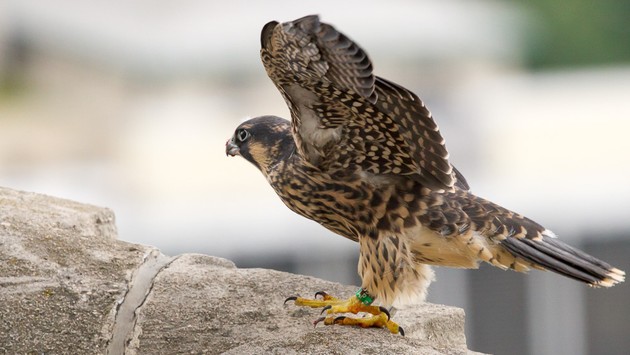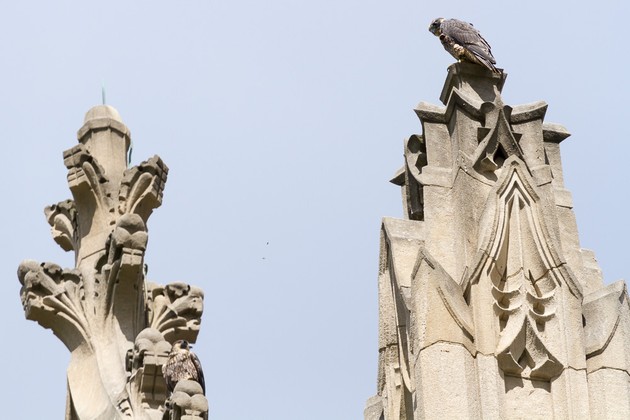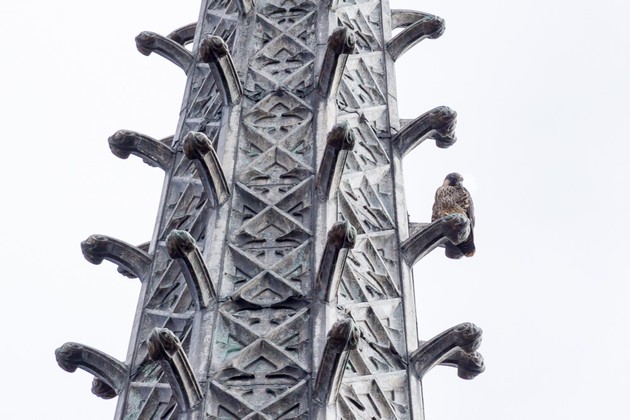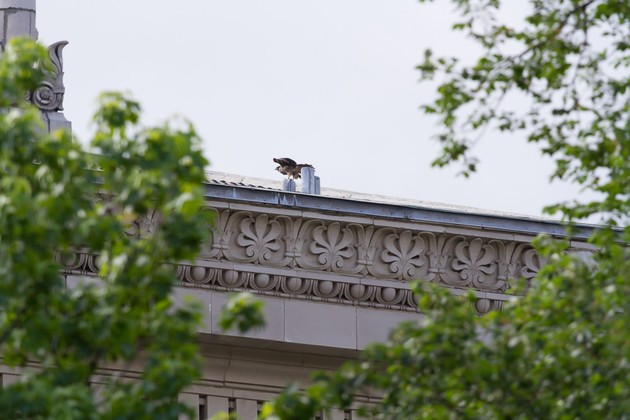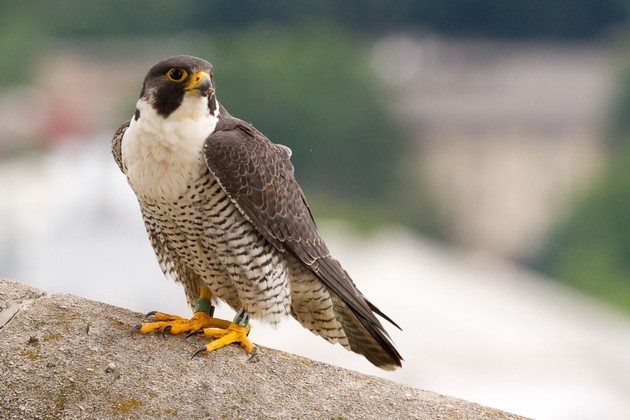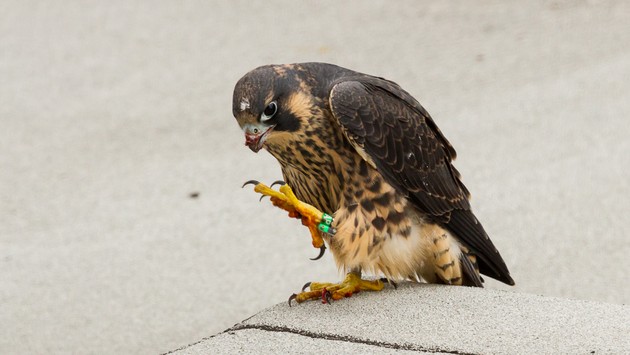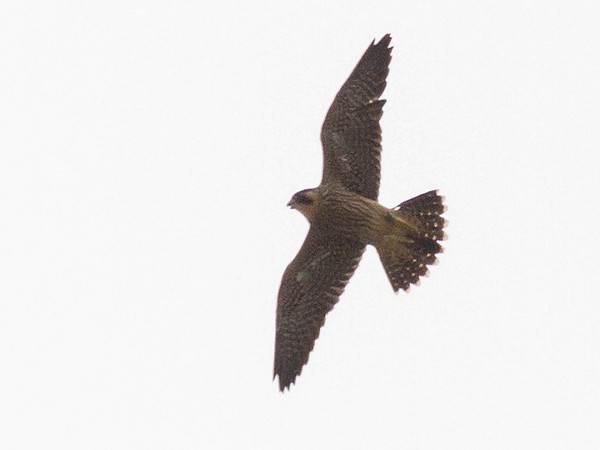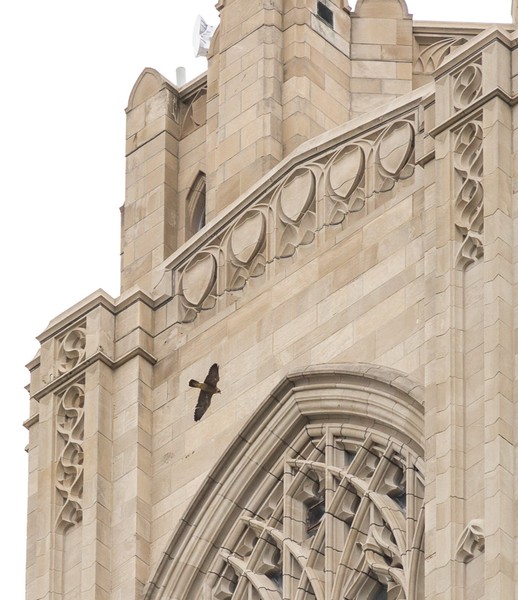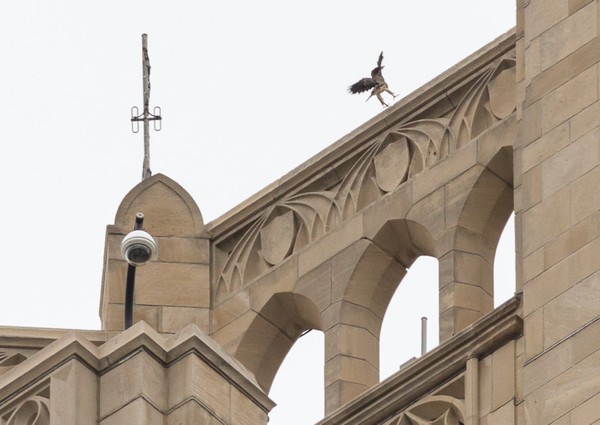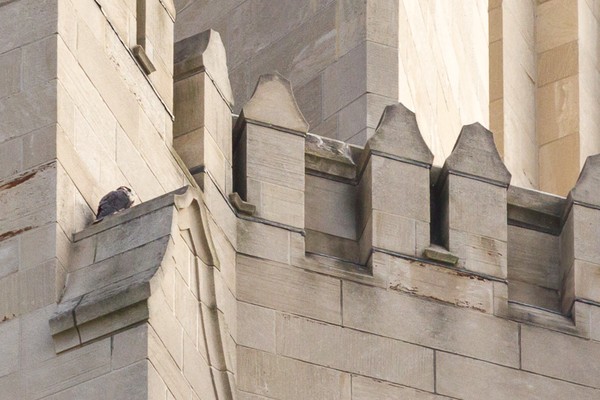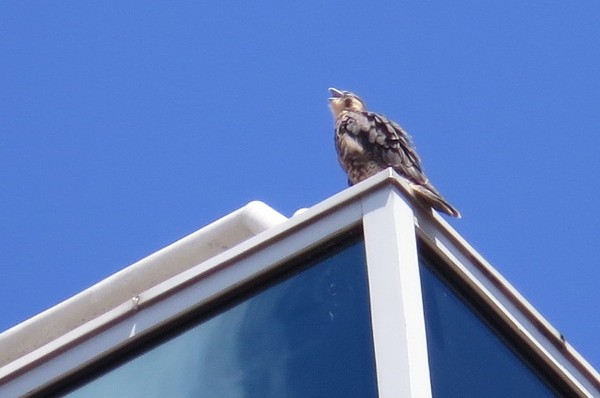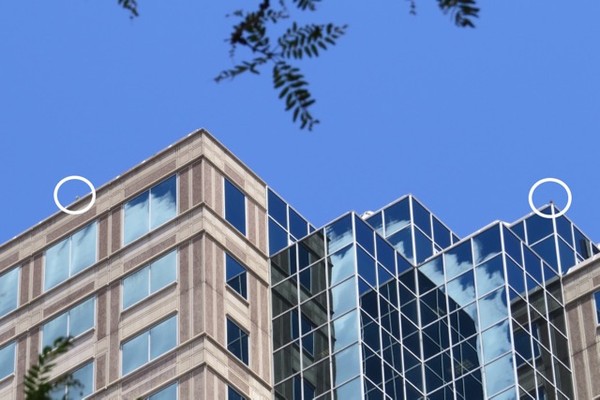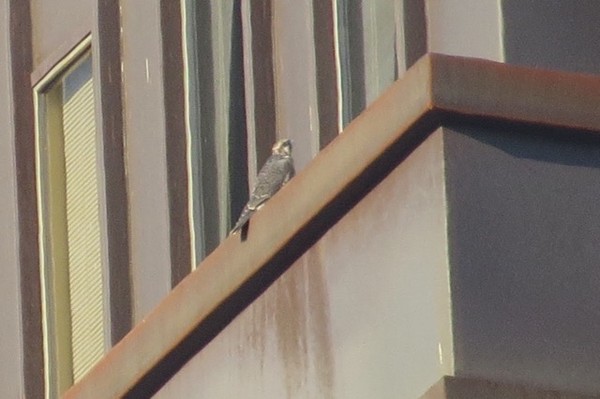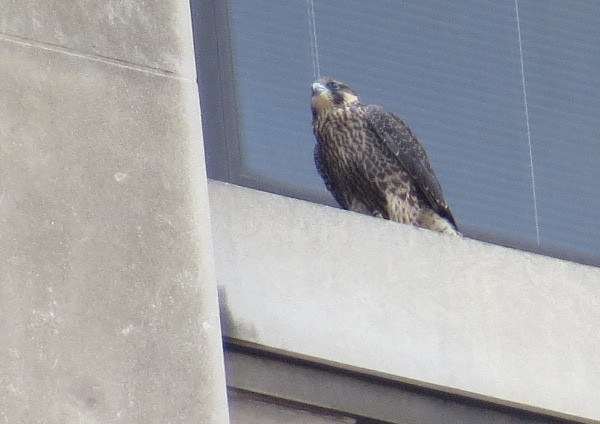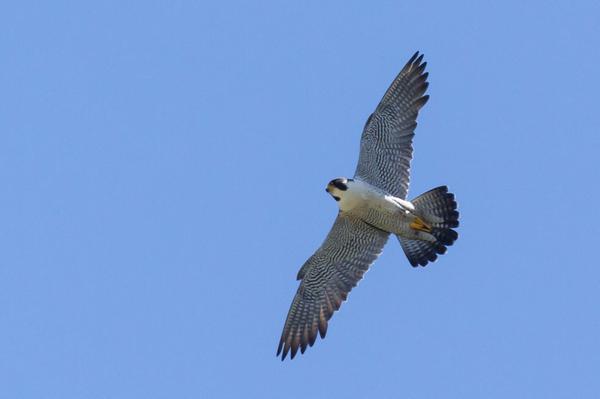
Now’s a good time to brush up on identifying peregrine falcons since they pass by hawk watches in October, especially on the coast. When you identify a peregrine you can also tell how old it is because the plumage is different in each age group: adult, juvenile, and sub-adult.
Plumage provides an exact age for two groups in October: Juveniles are first year birds, 6 months old, that hatched last spring. Sub-adults are second year birds, 18 months old, with nearly complete adult plumage.
Adults — two or more years old — all have the same plumage. Unfortunately you can’t know an adult’s exact age unless the bird is banded and you find out its provenance.
Here’s what they look like:
Adult peregrines (2+ years old in October) have fresh plumage in charcoal gray and white. The photo at top shows an adult male in flight. The photo below is an adult female. Adults have:
- Solid dark charcoal helmet (head)
- Dark charcoal malar stripes (on face)
- Clean white or slightly rosy chest and throat
- Horizontal charcoal+white stripes on belly and flanks
- Gray back: Male’s is pale blue-gray. Female’s is “muddy” gray.
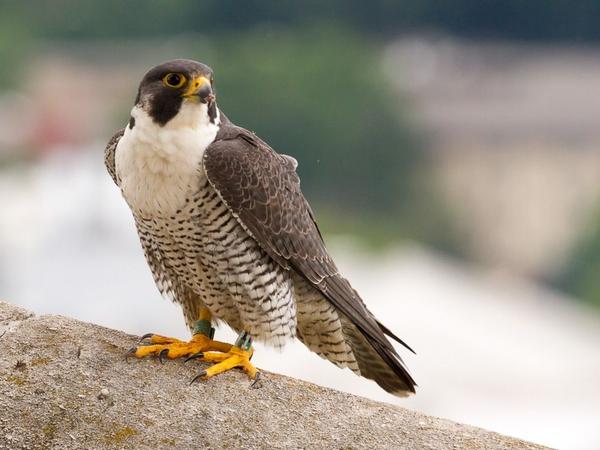
Juvenile peregrines (6 months old in October) are the same size as adults but their colors are brown+cream. Juveniles have:
- Variable brown helmet with some cream-colored traces (head)
- Brown malar stripes (on face)
- Cream colored chest that’s striped all the way up to the throat
- Vertical brown+cream stripes on belly and flanks
- Brown back.
- (Bonus!) Juveniles have cream-colored tips on their tails, visible as the sun shines through them in flight.
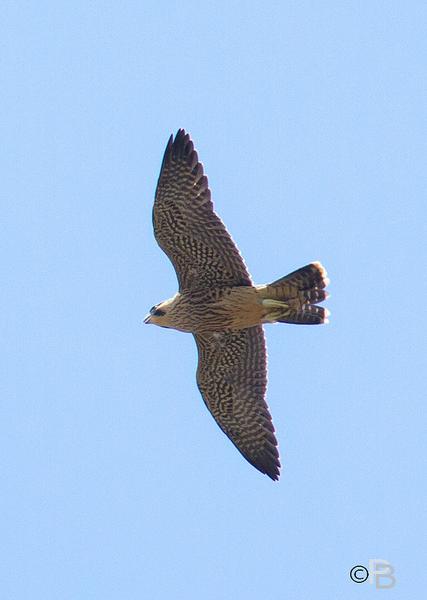
Above, a juvenile in flight. Below a juvenile shows off the vertical stripes on his chest and belly. His variable brown helmet with “eyes on the back of his head” and horizontal cream-colored line at his crown.
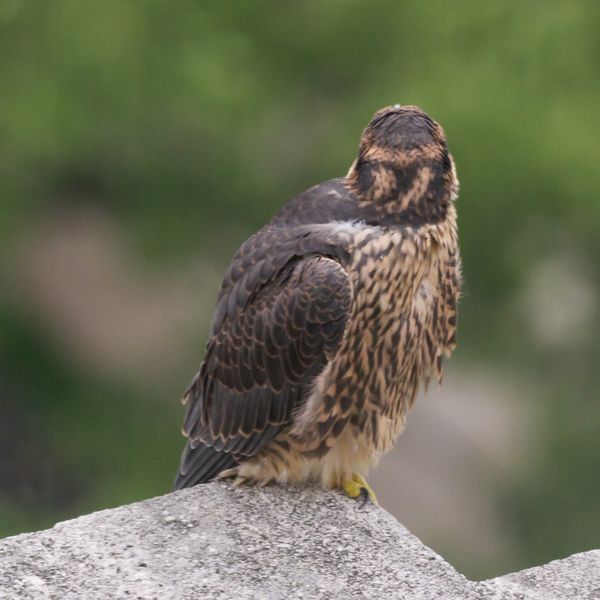
Sub-adults are 18 months old with nearly complete adult plumage except for a few juvenile feathers. They began to molt into adult plumage last spring at 10-12 months old. By October their few juvenile feathers are hard to see without a photograph. They are ready to breed next spring.
Below, an 18-month-old peregrine named Spirit is in rehab at Medina Raptor Center in the autumn of 2014. You can see her back is mostly gray with just a few brown feathers. Her head shows faint traces of the juvenile cream colors.
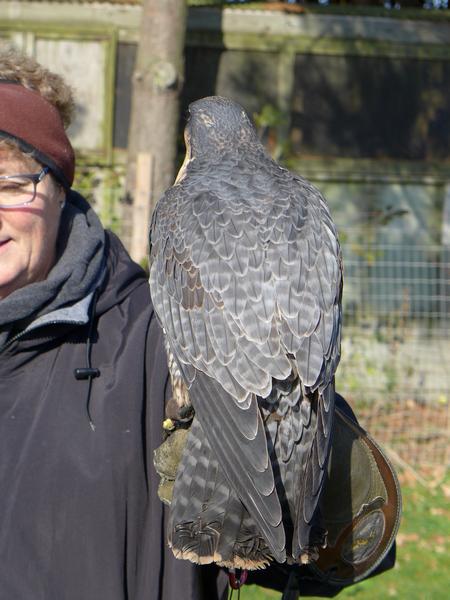
For a view of sub-adult plumage in the spring, see these photos taken in March 2016 of a 10-month-old Juvenile Peregrine Falcon Transitioning Into Adult Plumage.
For additional tips, see Ageing Peregrine Falcons in the Field by Alex Lamoreaux at Nemesis Bird.
(all photos taken at University of Pittsburgh by Peter Bell … except for the peregrine on the glove, “Spirit” at Medina Raptor Center, photo by Kate St. John)
